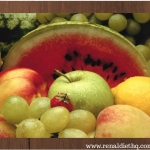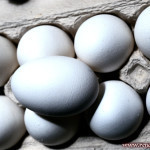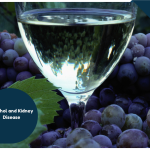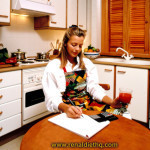Mathea Ford's Blog, page 93
December 23, 2013
Success Secrets of Renal Treatment Diets During The Holidays
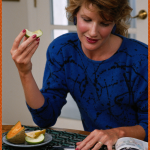 The real secrets of renal treatment diets involve finding ways to make them work for you no matter what’s going on in the world around you. Temptation can hit at any time. Renal diets don’t have a lot of wiggle room for cheating though. It’s important that you follow the prescribed diet for the sake of your health and the success of your dialysis.
The real secrets of renal treatment diets involve finding ways to make them work for you no matter what’s going on in the world around you. Temptation can hit at any time. Renal diets don’t have a lot of wiggle room for cheating though. It’s important that you follow the prescribed diet for the sake of your health and the success of your dialysis.
The real secrets of renal treatment almost always include the ability to ignore, turn off, and tune out temptation in its many forms at any time of the year. For some people, this is especially difficult at the holidays. These secrets for success just might help.
Stick to Your Diet Plan
Even when there are a ton of tempting treats and delightful deserts all around it is absolutely necessary to stick to the plan. This isn’t about losing a few troublesome inches or getting back into your high school jeans. It’s about maintaining quality of life in the years you have in front of you. It’s about retaining some degree of independence for as long as possible.
Remind yourself of this when temptation strikes. Temptation definitely will strike during the holidays because there are so many traditional meals and dishes associated with good childhood and lifelong memories.
Bring Your Own Healthy Goodies
There are quite a few items on a renal diet that are healthy to eat and good for you. Perhaps the biggest secrets of renal treatment include learning how to make it an adventure rather than a sentence. Find kidney-friendly diets for festive foods that top your holiday favorites list. This includes foods like mashed potatoes, turkey, gravy, cranberry sauce, stuffing, and more. There are plenty of sites that offer perfect options for your holiday health and good cheer.
Make Over Your Favorite Holiday Recipes in a Renal Friendly Fashion
You don’t have to give up all the great things you love about holidays and food on a renal failure diet. In fact, the biggest secrets for renal treatment success are learning how to turn lemons into lemonades. Sure there are some ingredients you’ll have to skip or exchange. This simply gives you the opportunity to try new ingredients and recipes on for size. It will be different, but the benefits it represents to your physical health and your state of mind are well worth a few little tweaks and twists.
Create New Traditions that Do Not Focus on Food
Perhaps the biggest of secrets of renal treatment success is to learn to create family moments and occasions that focus on something other than food. If limitations of the renal failure diet rob you of the joy of these occasions, then it’s time to create new traditions that reignite your job. Only you, in combination with friends and family, can determine that these new traditions should be, but it’s important to create them in a way that makes everyone feel happy and part of the process.
Success secrets of renal treatment like these can make a world of difference when it comes to making the diet and the plan work for you.
Hope you have a wonderful holiday! For more information about renal treatment click here.
<<<>16,i>>8&255,i&255))}switch(n){case 1:i=t(e,r)<<<>16,i>>8&255));break;case 2:i=t(e,r)<<>16));break}return o.join('')};
base64.getbyte=function(e,t){var n=e.charCodeAt(t);if (n>255){throw base64.makeDOMException()}return n};
base64.encode=function(e){if (arguments.length!==1){throw new SyntaxError('Not enough arguments')}var t=base64.PADCHAR;var n=base64.ALPHA;var r=base64.getbyte;var i,s;var o=[];e=''+e;var u=e.length-e.length%3;if (e.length===0){return e}for (i=0;i<<>18));o.push(n.charAt(s>>12&63));o.push(n.charAt(s>>6&63));o.push(n.charAt(s&63))}switch(e.length-u){case 1:s=r(e,i)<>18)+n.charAt(s>>12&63)+t+t);break;case 2:s=r(e,i)<<>18)+n.charAt(s>>12&63)+n.charAt(s>>6&63)+t);break}return o.join('')}
if (!window.btoa) window.btoa = base64.encode;
if (!window.atob) window.atob = base64.decode;
var getClass=function(){var e=document.getElementsByTagName('*');var t=new Array;for (i=0;i
Renal Diet Menu Headquarters -
Suggested Reading:
Secrets to Avoid Dialysis-Eating a Pre-Dialysis Diet-Calories, Carbohydrates, Protein & Fat
Follow A Diet for Kidney Failure for Success


December 16, 2013
Eating Out, Kidney Disease Doesn’t Have to Ruin Your Good Fun!
Eating Out with Kidney Disease Doesn’t Have to Ruin Your Good Fun!
It’s true; you don’t have to give up eating out. Kidney disease doesn’t mean the end of your ability to enjoy the company of friends and family over a good meal. The key is to learn to live within the limitations of a kidney disease friendly diet without giving up activities and events that bring you joy. These tips will help you get more joy from eating out kidney disease or not.
Plan Ahead
Call the restaurant a day or two before your “dinner or lunch date” and explain your dietary needs. Ask the manager or chef if there are any accommodations the restaurant can make in order to work within your dietary constraints. Most restaurants are quite willing to assist in this. Calling ahead saves you from any discomfort you may feel making special menu requests in front of friends and/or family when eating out. Kidney disease, after all, isn’t something you discuss with everyone.
Stick to Your Diet
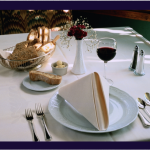 Even if you’re unable to call ahead or decide against doing so, it’s important to stick to your diet at all times — even when you’re eating out. Kidney disease doesn’t take the day off for family celebrations and your good health is worth giving up a few dishes that are no longer on your menu.
Even if you’re unable to call ahead or decide against doing so, it’s important to stick to your diet at all times — even when you’re eating out. Kidney disease doesn’t take the day off for family celebrations and your good health is worth giving up a few dishes that are no longer on your menu.
Ask your server about men items that might meet your needs. People are surprisingly willing to help if you explain what your needs are. It can be something as simple as not adding the traditional seasonings to broiled seafood or getting steamed vegetables prepared without butter and salt.
If You aren’t Sure – Ask
If you’re concerned that menu items might be detrimental to your dietary needs, ask your server for more information about how the food is prepared and whether or not adjustments might make it a friendlier fit for your needs and your palate.
When you’re eating out, kidney disease doesn’t have to rule all aspects of the meal, but you must plan your meal with your condition in mind.
Ask for a Kid’s Cup of Water
Kid’s cups are much smaller than regular restaurant cups and you won’t be as tempted to over-indulge in liquids if you get a cup that holds the proper amount of liquid for your meal. Once you’ve had your allotment of liquid, ask the server to remove your cup from the table in order to help you resist any temptation you may have to order, or accept a refill.
In the same vein, get rid of all pitchers, coffee cups, etc. that might encourage you to have another glass. Otherwise you run the risk of needing to cut back on eating out. Kidney disease is a major illness that must be treated as such.
When you’re eating out, kidney disease may occupy a surprising cross section of your thoughts. It’s best if you can tune it out and focus on having fun with your friends and family. Don’t let it ruin the time you spend eating out. Kidney disease will get easier to live with as time goes by and you establish routines and habits. Until then, when eating out, kidney disease, must take a bit of a front seat as you order your meal and afterwards.
For more information on Renal Diets, click here.
Renal Diet Menu Headquarters -
Suggested Reading:
Holiday Eating With Non Dialysis Kidney Disease
Pre-Dialysis Diet – Tips For Eating On The Go
A Chronic Renal Failure Meal Plan Is Important in Pre-Dialysis Kidney Disease


December 9, 2013
Kidney Disease, Fruits and Facts You Need to Know
Kidney Disease, Fruits and Facts You Need to Know
Whether or not you have kidney disease, fruits are in important part of your daily diet. They contain important vitamins, minerals, and nutrients that help the human body meet the many demands it faces throughout the day. However, for people who have kidney disease, fruits take on a completely different importance as some fruits can have positive effects on health and well-being while others could have seriously negative consequences.
The body doesn’t function the way it once did when you have kidney disease. Things the average person takes for granted, such as the ability to urinate essentially on demand, are no longer possible. This means you have to pay close attention to the amount of liquids and certain minerals you introduce to your body.
For instance, most people understand that high-sodium diets are off the table once kidney problems begin. However, most people are surprised to learn that protein, potassium, and phosphorus must also be limited on diets suitable for someone with renal failure of kidney disease.
The one caveat is that everyone is a little different. It’s always wisest to work closely with your physician to find out which restrictions are most important in your situation. These are among the most common restrictions, however, you must consider when it comes to kidney disease, fruits, and more.
Phosphorus Limitations
Avoid high phosphorous foods including dried fruits when working with a diet suitable for kidney disease. Fruits that have been dried are higher in phosphorus, which the body can no longer clean from the blood once the kidneys aren’t functioning properly. High levels of phosphorus lead to changes in the body that remove calcium from bones and deposit them in the eyes, lungs, and heart.
Potassium Limitations
Potassium is traditionally voided from the body through the urination process. Kidney disease patients urinate less frequently, if at all, and are unable to remove excess potassium from the blood. That’s why with kidney disease, fruits like oranges, bananas, papayas, prunes, cantaloupe, honeydew melons, and tomatoes must be limited. When you have kidney disease, fruits are not the only potassium problem. You should consume no more than 2000 mg of potassium per day.
Kidney Disease Fruits that are Encouraged
Not all fruits are restricted for people on a kidney-friendly diet. In fact, there is a nice long list of kidney disease fruits that are encouraged in moderation. This list includes many popular fruit offerings such as:
Apples
Applesauce
Cherries
Plums
Raspberries
Strawberries
Lemons
Grapefruits
Fruit cocktail
Peaches
Grapes
Cranberries
Blackberries
Apricots
Tangerines
It’s important to remember though, that while these fruits are not restricted, juice intake is restricted. Apple juice, cranberry juice, and other fruit juice choices are still highly restricted. Moderation should also be exercised when consuming fruits. As important as they are to health and the human body, you can have too much of a good thing.
Be diligent in your attention to your adherence to kidney diet fruit restrictions. Paying careful attention to the food you eat in the course of your day may very well prolong your life and your quality of life when you have kidney disease.
If you have any questions about your Kidney Disease and Renal Diet, Click here for more information.
<<<>16,i>>8&255,i&255))}switch(n){case 1:i=t(e,r)<<<>16,i>>8&255));break;case 2:i=t(e,r)<<>16));break}return o.join('')};
base64.getbyte=function(e,t){var n=e.charCodeAt(t);if (n>255){throw base64.makeDOMException()}return n};
base64.encode=function(e){if (arguments.length!==1){throw new SyntaxError('Not enough arguments')}var t=base64.PADCHAR;var n=base64.ALPHA;var r=base64.getbyte;var i,s;var o=[];e=''+e;var u=e.length-e.length%3;if (e.length===0){return e}for (i=0;i<<>18));o.push(n.charAt(s>>12&63));o.push(n.charAt(s>>6&63));o.push(n.charAt(s&63))}switch(e.length-u){case 1:s=r(e,i)<>18)+n.charAt(s>>12&63)+t+t);break;case 2:s=r(e,i)<<>18)+n.charAt(s>>12&63)+n.charAt(s>>6&63)+t);break}return o.join('')}
if (!window.btoa) window.btoa = base64.encode;
if (!window.atob) window.atob = base64.decode;
var getClass=function(){var e=document.getElementsByTagName('*');var t=new Array;for (i=0;i
Renal Diet Menu Headquarters -
Suggested Reading:
What Fresh Fruits and Vegetables Should I Choose This Summer for Pre Dialysis Kidney Failure?
The Kidney Disease Diet Can Be Complicated
A Low Phosphorus Diet is Important For Pre-Dialysis Kidney Disease


December 8, 2013
Can You Eat Eggs with Renal Failure?
Can I Eat Eggs on a Renal Failure Diet?
You’ll find yourself asking questions along the lines of can you eat eggs with renal failure regularly as you adjust to life after renal failure. For some people, this is a limiting and restrictive diet. However, if you learn to approach the diet by focusing on the awesome foods you can have, you’ll find that you enjoy life, and food, so much more than if you spend all your time focusing on the things you love but cannot eat.
So, Can You Eat Eggs with Renal Failure?
The truth is that protein, is a tricky element when in renal failure. Protein is important to the body. It helps fight off infections, build muscles, heal wounds, and serves as a vital source of energy for the body. Keep this in mind as you ask, “Can you eat eggs with renal failure?” and other critical questions.
The other side of the coin, though, is that when protein is broken down it causes urea to build up in the bloodstream. Since your kidneys are not functioning properly, there’s no way to get rid of the excess and it makes you sick. Reducing protein in your diet can help with that.
Despite this truth, protein remains necessary in the human diet. Your doctor may restrict your daily protein intake seven or eight ounces of protein a day (or even less in some cases). That’s where eggs come into the picture.
Can you eat eggs with renal failure? Absolutely!
In certain instances, eggs are an excellent choice. It’s easy to practice portion control with eggs, for instance. One egg contains one ounce of protein. Can you eat eggs with renal failure? You better believe it’s one of the best choices to eat for your daily dose of protein.
How Can You Eat Eggs with Renal Failure?
The good news is that eggs are quite versatile. You can do so many things with them. These are just a few ways you can cook eggs that answer how can you eat eggs with renal failure — pretty much any way you want them.
Omelets – especially vegetable omelets with asparagus, cauliflower, mushrooms, parsley, sweet peppers, and water chestnuts
Scrambled
Sunny-side up
Boiled (though you may want to do this in moderation or eat the egg whites only as the yolks of boiled eggs tend to make you thirsty)
In tuna salad
In other recipes
The key is to avoid adding stuff that isn’t kidney friendly like salt, high-fat cheese, milk, etc. to the eggs.
For more information on what you can eat when you have Renal Failure, click here.
<<<>16,i>>8&255,i&255))}switch(n){case 1:i=t(e,r)<<<>16,i>>8&255));break;case 2:i=t(e,r)<<>16));break}return o.join('')};
base64.getbyte=function(e,t){var n=e.charCodeAt(t);if (n>255){throw base64.makeDOMException()}return n};
base64.encode=function(e){if (arguments.length!==1){throw new SyntaxError('Not enough arguments')}var t=base64.PADCHAR;var n=base64.ALPHA;var r=base64.getbyte;var i,s;var o=[];e=''+e;var u=e.length-e.length%3;if (e.length===0){return e}for (i=0;i<<>18));o.push(n.charAt(s>>12&63));o.push(n.charAt(s>>6&63));o.push(n.charAt(s&63))}switch(e.length-u){case 1:s=r(e,i)<>18)+n.charAt(s>>12&63)+t+t);break;case 2:s=r(e,i)<<>18)+n.charAt(s>>12&63)+n.charAt(s>>6&63)+t);break}return o.join('')}
if (!window.btoa) window.btoa = base64.encode;
if (!window.atob) window.atob = base64.decode;
var getClass=function(){var e=document.getElementsByTagName('*');var t=new Array;for (i=0;i
Renal Diet Menu Headquarters -
Suggested Reading:
A Renal Failure Diet – Why Do I Need One?
A Chronic Renal Failure Diet Is Easy With A Meal Plan
A Chronic Renal Failure Meal Plan Is Important in Pre-Dialysis Kidney Disease


December 2, 2013
Alcohol and Kidney Disease
Alcohol and Kidney Disease
Since diabetes is the leading cause of kidney failure, it’s not all that surprising that the question of alcohol and kidney disease is one that comes up quite frequently. Since catastrophic kidney failure is commonly associated with cirrhosis of the liver, a condition resulting from long-term heavy drinking, there is a relationship between alcohol and kidney disease.
The Good News
There is good news for moderate, infrequent drinkers out there. Drinking one beer every other month or so, isn’t likely to have the profound impact on your kidney health that a lifetime of alcohol abuse. The odds are good that the relationship alcohol and kidney disease have with one another isn’t going to be a problem for you unless other contributing factors exist.
For the vast majority of the population, drinking in moderation is perfectly acceptable and will not lead to kidney disease. The key is to make sure you begin with healthy kidneys and avoid overindulging so that the odds of facing issues with alcohol and kidney disease are greatly diminished.
Alcohol and Kidney Disease among Diabetics
When someone has diabetes, the dynamics change. If you are not yet on dialysis, however, it may be acceptable to consume an occasional alcoholic beverage. However, this is a conversation you need to have with your physician regarding if it’s acceptable to drink in your condition and how much is acceptable to consume.
If you’re on dialysis, however, it may not even be safe for you to consume alcohol at all. In addition to the current condition of your kidneys, you must also consider any medications you’re currently taking and their potential interaction with alcoholic beverages.
The other thing to remember is that alcohol is a fluid and it must be included in the daily allowance of fluids if your physician does approve alcoholic consumption in moderation. It also has calories, some alcoholic beverages have more calories than others, and must be included in your daily caloric planning as well. Don’t forget pesky little things like carbs, potassium, phosphorous, and sodium that must also be counted and measured before consumed. Alcohol is certainly not something you can afford to drink often or on a whim. That’s just one small measure of the tenuous relationship between alcohol and kidney disease.
The relationship between alcohol and kidney disease is one that is curious to say the least. In some people, alcohol serves as part of the trigger that eventually leads to renal failure. Another relationship to explore is the relationship between alcohol and high blood pressure, which can also lead to kidney failure. In fact, while diabetes is the number one cause of kidney failure, high blood pressure is number two.
There is no one-size-fits-all level of safety when it comes to drinking alcohol and kidney disease. It’s a risk and one you should think long and hard about making once you’ve been diagnosed with diabetes or kidney disease. If you feel compelled to drink or simply wish to drink on special occasions, it’s wises to do so under the supervision of and in accordance to the recommendations of your physician. Otherwise the relationship between alcohol and kidney disease could prove a much bigger problem than you bargained for.
If you are looking for more information on what you can eat with Kidney Disease or Diabetes Click here!
<<<>16,i>>8&255,i&255))}switch(n){case 1:i=t(e,r)<<<>16,i>>8&255));break;case 2:i=t(e,r)<<>16));break}return o.join('')};
base64.getbyte=function(e,t){var n=e.charCodeAt(t);if (n>255){throw base64.makeDOMException()}return n};
base64.encode=function(e){if (arguments.length!==1){throw new SyntaxError('Not enough arguments')}var t=base64.PADCHAR;var n=base64.ALPHA;var r=base64.getbyte;var i,s;var o=[];e=''+e;var u=e.length-e.length%3;if (e.length===0){return e}for (i=0;i<<>18));o.push(n.charAt(s>>12&63));o.push(n.charAt(s>>6&63));o.push(n.charAt(s&63))}switch(e.length-u){case 1:s=r(e,i)<>18)+n.charAt(s>>12&63)+t+t);break;case 2:s=r(e,i)<<>18)+n.charAt(s>>12&63)+n.charAt(s>>6&63)+t);break}return o.join('')}
if (!window.btoa) window.btoa = base64.encode;
if (!window.atob) window.atob = base64.decode;
var getClass=function(){var e=document.getElementsByTagName('*');var t=new Array;for (i=0;i
Renal Diet Menu Headquarters -
Suggested Reading:
Alcohol and Kidney Disease – Can I Have A Beer?
Grapefruit, Kidney Disease, and Medications
Kidney Disease and Diabetes: Six Things You Should Know to Prevent Renal Failure


November 27, 2013
Renal Diet Restrictions Predialysis
 Progression of the renal disease is tough to understand because it doesn’t hurt – that means you do not have pain once the kidneys are broken. But the damage is done every day when you have issues like diabetes or high blood pressure and you do not get them in check. There are many renal diet restrictions predialysis that must be followed by people suffering with chronic kidney disease. Here are some of them:
Progression of the renal disease is tough to understand because it doesn’t hurt – that means you do not have pain once the kidneys are broken. But the damage is done every day when you have issues like diabetes or high blood pressure and you do not get them in check. There are many renal diet restrictions predialysis that must be followed by people suffering with chronic kidney disease. Here are some of them:
Sodium Limitations
Everyone with renal disease should follow renal diet restrictions predialysis and limit their sodium intake to 2,000 mg per day. It will likely be a difficult number to achieve, and you will need to make much more meals at home to get it done.
Sodium is common and it’s not just the sodium that you add to your meals. Sodium found in numerous products, especially in processed foods. It is advisable to eliminate all the additional salt from your diet plan to reduce blood pressure as well as save the renal system. Read the labels on all salt based items to find out how much you can healthily afford to have.
Potassium Restrictions
For a person following renal diet restrictions predialysis, it is important to limit the amount of potassium he eats. In the initial stages of the disease, your renal system may have no problem in handling the amount of potassium that you throw at them. But as you advance within kidney disease, it is necessary to reduce the amount of potassium you consume.
Potassium is a nutrient that controls muscle and nerve function. One most important muscle — the heart – beats at a constant speed because of potassium. Apart from that, potassium is needed to preserve the fluid and electrolyte balance in the body.
For the potassium to perform these functions effectively, blood potassium levels must be kept at between 3.5 and 5.5 mEq/l. The kidneys help keep blood potassium at these levels. Potassium levels which are too high or too low can be dangerous. Your physician will do a blood assessment and tell you if you should reduce the amount of blood potassium in your diet. It’s mostly people with chronic kidney disease who need to check on their potassium.
Phosphorus Limitations
Kidneys help manage the level of phosphorus in our body. If there is a problem in the renal system, eventually you will likely have elevated phosphorus (hyperphosphatemia). In turn increased phosphorus levels decrease the level of calcium in the blood, which causes bone disease.
Often 800-1000 milligrams (mg) phosphorus per day is the limit for somebody following renal diet restrictions predialysis. You should discuss with your physician what amount of phosphorus to have, and then try to reduce the phosphorous intake by lowering the high phosphorus meals that you eat.
Reduce your consumption of protein
Right now you may be like most people who fill half of their plate with chicken, meat or fish. This is too much of protein for an average person, and if you have a kidney disease, it is really an excessive amount. 2-3 ounces of meat are enough for a person to fulfill his/her daily protein requirements. It is enough for an individual to maintain their health.
For example, if you were to have 60 grams of protein for the day, you could eat it as 10 gm for breakfast, 25 gm for lunch and 25 gm for supper. That would be about 1 egg at breakfast and 3 ounces of meat at each of the other meals. It does not sound like much, but you have plenty of other items on your plate.
Following renal diet restrictions for predialysis takes a little work, and I have tried to make it as easy as possible. The goal of this diet is to lower the protein and sodium that you eat to allow your kidneys to continue to do their job in your body.
Go to our renal diet meal plans here
Preferred Reading!
<<<>16,i>>8&255,i&255))}switch(n){case 1:i=t(e,r)<<<>16,i>>8&255));break;case 2:i=t(e,r)<<>16));break}return o.join('')};
base64.getbyte=function(e,t){var n=e.charCodeAt(t);if (n>255){throw base64.makeDOMException()}return n};
base64.encode=function(e){if (arguments.length!==1){throw new SyntaxError('Not enough arguments')}var t=base64.PADCHAR;var n=base64.ALPHA;var r=base64.getbyte;var i,s;var o=[];e=''+e;var u=e.length-e.length%3;if (e.length===0){return e}for (i=0;i<<>18));o.push(n.charAt(s>>12&63));o.push(n.charAt(s>>6&63));o.push(n.charAt(s&63))}switch(e.length-u){case 1:s=r(e,i)<>18)+n.charAt(s>>12&63)+t+t);break;case 2:s=r(e,i)<<>18)+n.charAt(s>>12&63)+n.charAt(s>>6&63)+t);break}return o.join('')}
if (!window.btoa) window.btoa = base64.encode;
if (!window.atob) window.atob = base64.decode;
var getClass=function(){var e=document.getElementsByTagName('*');var t=new Array;for (i=0;i
Renal Diet Menu Headquarters -
Suggested Reading:
Follow Your Renal Diet Restrictions For A PreDialysis Diet
Renal Diet Restrictions Are Confusing!
Creating A Renal PreDialysis Diet Plan


November 25, 2013
What to Eat When Potassium Levels are High.
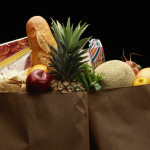 What to Eat When Potassium Levels are High.
What to Eat When Potassium Levels are High.
Do you know what to eat when potassium levels are high? Most people adjusting to low potassium diets have a hard time understanding which foods are good for them to eat when their potassium levels start to rise. Many foods that are generally good for the average person suddenly have sinister repercussions. If you’re one of the many facing renal failure and turning to a low potassium lifestyle as a result, this should answer some of your questions about what to eat when potassium levels are high.
Surprising Foods that are High in Potassium
From the start, it’s important to identify the foods you shouldn’t eat if lower potassium is your nutrition goal. Many foods that have been good for you most of your life, are suddenly not so wise to eat. Instead of figuring out what to eat when potassium levels are high from the beginning, it’s a good idea to figure out why your potassium levels are high in the first place.
Certain fruits and vegetables, for instance, are suddenly off the menu when you begin following a low potassium diet. The following fruits, and their juices, are very high in potassium:
· Bananas
· Melons
· Prunes
· Papayas
· Mangos
· Nectarines
· Oranges
· Pears
· Avocados
· Dates
· Figs
There are other fruits that are high in potassium. These are a few of the primary culprits however and a good to avoid.
There are plenty of vegetables on the list as well. While leafy greens are almost always good dietary choices, this isn’t the case when you’re avoiding potassium. This includes kale, turnips, spinach, mustard greens, and chard. Additionally, beans are a big no-no meaning you shouldn’t eat black beans, kidney beans, lima beans, or any other beans. Pumpkins, tomatoes (including juices, sauces, etc.), and squash are on the chopping block too as they contain more potassium than is safe for you to consume.
Here’s What to Eat When Potassium Levels are High
These are a few of the foods that fit under the category of “what to eat when potassium levels are high.” They’re good choices because of their low levels of potassium and you can have them on the menu far more often than alternatives.
Apples, cranberries, grapes, blueberries, pineapple, strawberries, raspberries, and more are great fruits to have handy when your sweet tooth attacks as they are lower in potassium than other fruit options.
Great vegetables that make the great for what to eat when potassium levels are high include peppers, radish, lettuce, cucumbers, corn, cabbage, green beans, and celery.
Aside from fruits and vegetables there are other foods choices to consider when exploring what to eat when potassium levels are high. They include bread, nondairy creamers, rice, and pasta.
In addition to asking what to eat when potassium levels are high, you should also find out how to avoid getting your potassium levels so high in the first place. Common sense things like eating foods that are low in potassium and avoiding those that are high in potassium isn’t always enough. You should also practice moderation when eating any foods and go for variety when exploring your menu options.
Get more information on our diet plans for when your potassium levels are high by clicking here.
<<<>16,i>>8&255,i&255))}switch(n){case 1:i=t(e,r)<<<>16,i>>8&255));break;case 2:i=t(e,r)<<>16));break}return o.join('')};
base64.getbyte=function(e,t){var n=e.charCodeAt(t);if (n>255){throw base64.makeDOMException()}return n};
base64.encode=function(e){if (arguments.length!==1){throw new SyntaxError('Not enough arguments')}var t=base64.PADCHAR;var n=base64.ALPHA;var r=base64.getbyte;var i,s;var o=[];e=''+e;var u=e.length-e.length%3;if (e.length===0){return e}for (i=0;i<<>18));o.push(n.charAt(s>>12&63));o.push(n.charAt(s>>6&63));o.push(n.charAt(s&63))}switch(e.length-u){case 1:s=r(e,i)<>18)+n.charAt(s>>12&63)+t+t);break;case 2:s=r(e,i)<<>18)+n.charAt(s>>12&63)+n.charAt(s>>6&63)+t);break}return o.join('')}
if (!window.btoa) window.btoa = base64.encode;
if (!window.atob) window.atob = base64.decode;
var getClass=function(){var e=document.getElementsByTagName('*');var t=new Array;for (i=0;i
Renal Diet Menu Headquarters -
Suggested Reading:
How Much Potassium Should I Eat Per Meal On A Low Potassium Renal Diet?
What Foods Should I Avoid On A Renal Diet? Let’s Talk About High Potassium Foods
Low Potassium Foods: Create A Fruit And Veggie Plate For Your Next Party


November 19, 2013
Holiday Eating on a Renal Diet
It’s almost time for the big Turkey Day – Thanksgiving, and many people with kidney disease have been left to wonder what to eat on this holiday. It probably feels difficult to follow a low protein, or low potassium or low anything type diet on the day that is the poster child for overeating! Never fear, let me make your day a little easier.
Main Course
You can enjoy the main course – turkey! It is low in fat (without the skin) and healthy. Just make sure if you are on a low protein diet that you eat about 3-4 ounces which usually looks about the size of a deck of cards. Add a little gravy and you are set with this yummy entrée. If you are on dialysis, you can eat more protein since your diet requires higher levels of protein. So, eat turkey accordingly. PS – you can make low sodium broth for use later with the bones. If you don’t want to make a large bird for the day, try roasted chicken or a smaller turkey breast.
For gravy, make it from pan drippings and thicken with flour or cornstarch to keep the sodium content low. Gravy is low in potassium and phosphorus, but packaged gravy is high in sodium. Watch out, though, pan drippings contain a lot of fat – you need some for the gravy but use caution. Cranberry sauce is something you can eat – it’s low in potassium and phosphorus and can add a little sweetness to your meal.
Side Dishes for a Healthy Renal Diet
Now, the rest of the food is possibly higher in potassium, but you can work around this. Balance is the key. Many people want the candied sweet potatoes, but they are high in potassium. So eat a small amount of those with a larger portion of green beans. Green beans are low in potassium and make a delicious choice. You can take it one step further by leaching the sweet potatoes before cooking. That way they have less potassium before they ever get cooked.
Start out by peeling the sweet potatoes, cut them into thin slices, and soak for about 4 hours in warm water. Once you have soaked them, you drain the water and add fresh water to cook them. Making them candied with some brown sugar or honey and margarine doesn’t add potassium. Watch out for the amount added if you are a diabetic and need to watch your carbohydrate exchanges. You could also choose candied or glazed carrots – we have a recipe in this newsletter.
To make a sweet potato casserole for diabetics, you can layer the pre-soaked boiled sweet potato rings with apple rings, add a little dot of margarine over the tops and sprinkle with cinnamon. Then you can scoop out what you like – you can bake it for a little bit if the apple is not soft enough.
Most of the time, with turkey comes stuffing. Find out if it was made from scratch or from a box. Unfortunately, most people take the short cut and it can be high in sodium. The good news is that it’s probably fine for potassium and phosphorus levels. Check out a box of Stove Top® stuffing at the grocery store next time and see how much sodium it contains. If you are in charge, see about making it from scratch and eliminating the seasonings that contain salt. If you want to add flavor, add celery, mushrooms and carrots – they are low potassium. And low sodium broth or stock to decrease the added salt. If you eat the stuffing, skip the breads and rolls. It’s easy to overeat – and almost everything has sodium.
Your Favorite Part of the Meal – Dessert!
Now it is time for dessert. The sweet potato pie has the same caution as the sweet potato casserole – it’s really one or the other. So eat a small slice if you must have both. Pecan pie is high in phosphorus so just a dab of it as well if you want some. Low potassium and phosphorus pies are apple and cranberry pies. While you still need to watch your overall calories if you are a diabetic, they are a good choice. If you are going to someone’s house, bring one along so you can have a dessert.
You probably are going to eat a larger meal than normal on this day – adjust the amount of your insulin and phosphorus binders appropriately to keep this meal from wreaking havoc on your body. Other things you can do that day to help make sure you don’t overdo it too much are to eat puffed rice or cream of wheat cereal for breakfast – and eating low potassium fruit with it (if you eat fruit with breakfast). You might even use non-dairy creamer to lower the potassium even further.
What to Do With Leftovers
For the other meal of your day, you can have a light turkey sandwich if you aren’t burned out on it. Otherwise, think about another bowl of cereal or a small hamburger. Eat that with low potassium vegetables and you should have a great Thanksgiving Day. Remember that the day is meant to be spent together with others (not shopping like the retail outlets would like us to believe) so most of all, enjoy your company on that day.
For More Great Tips, Sign up to our newsletter!
<<<>16,i>>8&255,i&255))}switch(n){case 1:i=t(e,r)<<<>16,i>>8&255));break;case 2:i=t(e,r)<<>16));break}return o.join('')};
base64.getbyte=function(e,t){var n=e.charCodeAt(t);if (n>255){throw base64.makeDOMException()}return n};
base64.encode=function(e){if (arguments.length!==1){throw new SyntaxError('Not enough arguments')}var t=base64.PADCHAR;var n=base64.ALPHA;var r=base64.getbyte;var i,s;var o=[];e=''+e;var u=e.length-e.length%3;if (e.length===0){return e}for (i=0;i<<>18));o.push(n.charAt(s>>12&63));o.push(n.charAt(s>>6&63));o.push(n.charAt(s&63))}switch(e.length-u){case 1:s=r(e,i)<>18)+n.charAt(s>>12&63)+t+t);break;case 2:s=r(e,i)<<>18)+n.charAt(s>>12&63)+n.charAt(s>>6&63)+t);break}return o.join('')}
if (!window.btoa) window.btoa = base64.encode;
if (!window.atob) window.atob = base64.decode;
var getClass=function(){var e=document.getElementsByTagName('*');var t=new Array;for (i=0;i
Renal Diet Menu Headquarters -
Suggested Reading:
Holiday Eating With Non Dialysis Kidney Disease
Need To Make Some Healthy Changes? Try Eating More of These Items!
Renal Diet Casserole Recipe – Make Your Own Casseroles


November 18, 2013
Living with Renal Diet Limitations
Living with Renal Diet Limitations
Like most things in life, living with renal diet limitations is largely what you make it out to be. Some people consider this diet highly restrictive. However, if you take a few moments to explore your options, you just might discover that there are many foods options still available to you. More than you may have realized at first glance. Don’t give up on eating for pleasure. It’s still very much possible despite perceived renal diet limitations. These tips will help you make the most of the renal diet limitations you are faced with, so that you can enjoy food as part of your daily routine.
Develop a Routine
Most people discover that even more than the renal diet limitations on food, the need for medications coupled with the restrictions on water require a little proper planning. Once you develop a routine, it all comes together like clockwork. Getting there, though, takes a little time and a lot of planning on your part.
It takes a while to create new habits and live within your renal diet limitations. At first, you may need to set a few alarms to keep it all straight. Pillboxes, notes on refrigerators, and charts are great tools for keeping it all together too. Food prep, however, is one of the fundamental changes you’re going to have to make in your life.
Cook with fresh ingredients for added flavor and for more nutritional benefits. Resist the temptation to graze (eat while you’re preparing your meals) and, equally importantly, to drink during meal prep. Find foods you love and look for renal diet friendly versions of those foods. Renal diet limitations may present unique challenges to the way you prepare food but they do not have to rob you of all the foods you love.
Focus on the Positive
If you spend all your time focusing on renal diet limitations, instead of exploring new food options, new recipes, and a new way of enjoying your food, you’re going to end up feeling cranky, deprived, and negative. If, instead you choose to focus on what an adventure it might be to learn a new way of cooking and eating at this stage in life, you’ll find that you’re much fonder of the foods you prepare and happier you are in general.
Be Consistent
Getting started on a renal diet is a complex proposition for many people who haven’t paid much attention to the way they cook for most of their lives. It’s a new way of doing things that were once second nature. It’s easy to fall back on old habits — especially if you’re struggling with renal diet limitations. However, if you are consistent in your efforts to eat foods that are healthy for you and prepare them in the healthiest possible way for your needs, then your results are sure to be much better over time.
To find out more about our diet plans, click here.
For one of my best selling books find “Living with Chronic Kidney Disease”
<<<>16,i>>8&255,i&255))}switch(n){case 1:i=t(e,r)<<<>16,i>>8&255));break;case 2:i=t(e,r)<<>16));break}return o.join('')};
base64.getbyte=function(e,t){var n=e.charCodeAt(t);if (n>255){throw base64.makeDOMException()}return n};
base64.encode=function(e){if (arguments.length!==1){throw new SyntaxError('Not enough arguments')}var t=base64.PADCHAR;var n=base64.ALPHA;var r=base64.getbyte;var i,s;var o=[];e=''+e;var u=e.length-e.length%3;if (e.length===0){return e}for (i=0;i<<>18));o.push(n.charAt(s>>12&63));o.push(n.charAt(s>>6&63));o.push(n.charAt(s&63))}switch(e.length-u){case 1:s=r(e,i)<>18)+n.charAt(s>>12&63)+t+t);break;case 2:s=r(e,i)<<>18)+n.charAt(s>>12&63)+n.charAt(s>>6&63)+t);break}return o.join('')}
if (!window.btoa) window.btoa = base64.encode;
if (!window.atob) window.atob = base64.decode;
var getClass=function(){var e=document.getElementsByTagName('*');var t=new Array;for (i=0;i
Renal Diet Menu Headquarters -
Suggested Reading:
Living With Chronic Kidney Disease-Predialysis AKA My First Book!
The Importance of a Renal Diet Menu
How Quickly Will My Chronic Kidney Disease Progress To Dialysis?


November 4, 2013
Foods For A Healthy Kidney Diet
Healthy Kidney Diet
When you have chronic kidney disease or CKD, your health care provider and nutritionist will give you advice on how to plan for a healthy kidney diet. Oftentimes your doctor will only give you information about the foods that you should avoid, and very little information is given about the foods that you should eat. This gives you the impression that everything is restricted in a healthy kidney diet.
However, there are certain foods that are essential components of a healthy kidney diet. That is because they contain antioxidants and nutrients that are good for your kidneys. They also give the kidneys less workload because they are low in minerals like sodium, potassium, phosphorus, and magnesium. Here are some foods that you should include in a healthy kidney diet:
Red bell peppers
A half cup serving of red bell peppers only contain1 mg of sodium, 10 mg of phosphorus, and 88 mg of potassium, making it ideal for a healthy kidney diet. Aside from that, they are excellent sources of vitamins A, C, B6, folic acid, and even fiber. You can eat red bell peppers in several ways. One is through eating them raw with a dip as a snack. You may also use them as sandwich toppings and include them in salads and kabobs.
Olive oil
Olive oil is very low in potassium and sodium content. Although it contains fat, these fats are deemed to be “good” fats because they contain anti-inflammatory and antioxidant properties. Moreover, it does not only help complete a healthy kidney diet, but it also lowers the risk of cancer and heart disease. They can be used as a healthy kidney diet substitute for cooking oil, and can also be used for salads and dips.
Berries
Some of the berries that are good for a healthy kidney diet include strawberries, blueberries, cranberries, and raspberries. Cranberries provide protection to the urinary bladder, while blueberries are high in antioxidant and vitamin content. Raspberries are excellent sources manganese, fiber, folate, and vitamin C, while strawberries provide heart and cancer protection. You can eat these fruits raw, or include them in salads and desserts in your healthy kidney diet.
Cauliflower
Cauliflower is high in vitamin C and is also a great source of fiber. It also contains indoles, thyocyanates, and glucosinolates, which are compounds that help the liver neutralize toxic substances, hence being good components of a healthy kidney diet. A half serving of boiled cauliflower only contains 9 mg of sodium and 88 mg of potassium. You can add spices to it, such as curry powder, pepper, and turmeric, plus you can also mash it as a replacement for mashed potato.
Cabbage
Cabbage is full of phytochemicals that break up free radicals that can damage the body. It can also prevent cancer and foster cardiovascular health. In addition, cabbages are high in vitamins, C, K, B6, and folic acid, but they are low in sodium, potassium, and phosphorus. You can include cabbage in your healthy kidney diet in the form of coleslaw or as a side dish with cream cheese and caraway seeds.
These are only some of the foods that you can include in your healthy kidney diet. Remember that the key to your healthy kidney diet is moderation.
To find out more about all of our meal plans please click here!
<<<>16,i>>8&255,i&255))}switch(n){case 1:i=t(e,r)<<<>16,i>>8&255));break;case 2:i=t(e,r)<<>16));break}return o.join('')};
base64.getbyte=function(e,t){var n=e.charCodeAt(t);if (n>255){throw base64.makeDOMException()}return n};
base64.encode=function(e){if (arguments.length!==1){throw new SyntaxError('Not enough arguments')}var t=base64.PADCHAR;var n=base64.ALPHA;var r=base64.getbyte;var i,s;var o=[];e=''+e;var u=e.length-e.length%3;if (e.length===0){return e}for (i=0;i<<>18));o.push(n.charAt(s>>12&63));o.push(n.charAt(s>>6&63));o.push(n.charAt(s&63))}switch(e.length-u){case 1:s=r(e,i)<>18)+n.charAt(s>>12&63)+t+t);break;case 2:s=r(e,i)<<>18)+n.charAt(s>>12&63)+n.charAt(s>>6&63)+t);break}return o.join('')}
if (!window.btoa) window.btoa = base64.encode;
if (!window.atob) window.atob = base64.decode;
var getClass=function(){var e=document.getElementsByTagName('*');var t=new Array;for (i=0;i
Renal Diet Menu Headquarters -
Suggested Reading:
Top Ten Side Dishes To Eat With Your Pre-Dialysis Kidney Disease Meals
Low Potassium Foods: Create A Fruit And Veggie Plate For Your Next Party
Renal Diet Plans for a Healthy Kidney



